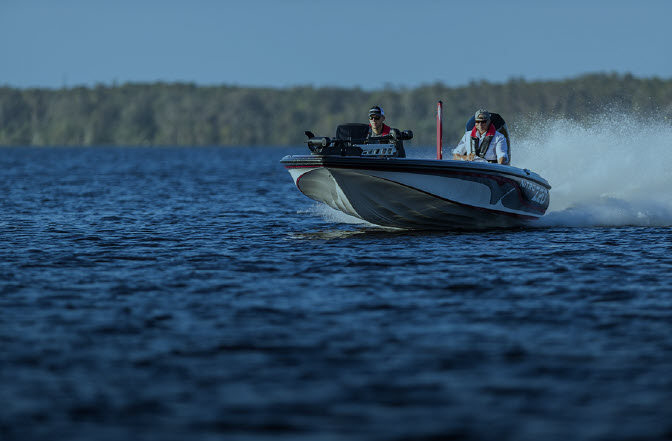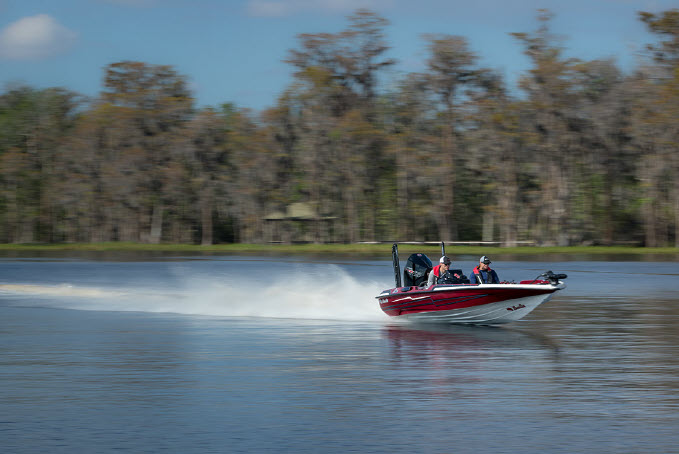A stainless steel propeller can last many seasons, but for most boat owners the cost is not insignificant, especially for boats with more than one engine. With this in mind, Mercury Marine has created a Propeller Demo Program for its dealers that allows a boat owner to test drive stainless steel Mercury propellers. The demo program makes it possible to zero in on the best all-around propeller model and pitch size for your boat before you make that purchase.
Mercury dealers participating in the Propeller Demo Program have on hand a selection of popular stainless steel propeller models in a range of pitch sizes dedicated to demo use. Each dealership devises its own demo program policy, but most request a modest deposit, which may often be applied to the purchase of a new prop. If you decide to make a purchase, the dealer will order you a brand-new prop. The demo props go back on the shelf for the next boater to try.
What’s Your Baseline?
To start the process, you’ll want to establish baseline performance with your current propeller. This will require a tachometer to report engine RPM. If your boat is not equipped with a tachometer, one option may be Mercury VesselView Mobile, which wirelessly connects your engine via Bluetooth to your mobile device to display a variety of engine data, including very accurate engine RPM. VesselView Mobile can be easily connected to any SmartCraft-compatible Mercury or MerCruiser engine 2004 and newer, 40 horsepower and up, by virtue of an easy-to-install add-on module.
 You’ll also want to measure accurate boat speed. The GPS-enabled speedometers in newer boats, or GPS speed from a fish locator or navigation screen, are very accurate. If you have an older boat equipped only with a pitot tube speedometer, consider using a hand-held GPS device or download a speedometer app to your smartphone – there are dozens of these apps available. Mercury VesselView Mobile can also be used to report boat speed.
You’ll also want to measure accurate boat speed. The GPS-enabled speedometers in newer boats, or GPS speed from a fish locator or navigation screen, are very accurate. If you have an older boat equipped only with a pitot tube speedometer, consider using a hand-held GPS device or download a speedometer app to your smartphone – there are dozens of these apps available. Mercury VesselView Mobile can also be used to report boat speed.
If possible, do your baseline testing with the boat loaded as you’d typically use it. It’s best to test on a calm day or in protected water where you can run at full throttle in comfort. Run the boat up to wide-open throttle (WOT) with the engine or drive trimmed out for maximum lift. Note that it’s very easy to over-trim, in which case the prop will begin to slip and boat speed will actually go down even as the RPM increases. This is where that GPS speedometer is handy. You can bump the trim up in small increments until you see the boat losing speed. Then bump the trim back down and watch the speed come back. Now you’re at max trim for that prop/hull/engine combination. Note your engine RPM and your boat speed. If there’s wind or current, run your tests in both directions and then average the results.
Ideally engine RPM should be near the top of the WOT operating range, which you can find in your owner’s manual. A Mercury 150hp Pro XS outboard has a WOT range of 5200-6000 RPM, for example, while a MerCruiser 6.2L sterndrive engine has a WOT range of 5000-5400 RPM. If your WOT RPM is too high or too low, you’ll want to try a prop with more or less pitch. Adding propeller pitch will decrease wide-open throttle (WOT) engine speed, while subtracting pitch will increase WOT RPM.
 Changing propeller pitch is rather like changing gears up or down on a bicycle – in a low gear you can ride away quickly but soon your legs will be spinning and the bike won’t go very fast. In a high gear you’ll need to mash the pedals to start moving but you’ll eventually reach a faster top speed. If prop pitch is too low, engine RPM at wide-open throttle may be too high (above the recommended WOT RPM range) and while boat acceleration may be strong top speed will suffer. If prop pitch is too high, acceleration will suffer and the engine will “lug” or not be able to reach the bottom of the WOT RPM range. Note: Your WOT RPM should not be above the recommended range for your engine – either condition can damage the engine and drive components.
Changing propeller pitch is rather like changing gears up or down on a bicycle – in a low gear you can ride away quickly but soon your legs will be spinning and the bike won’t go very fast. In a high gear you’ll need to mash the pedals to start moving but you’ll eventually reach a faster top speed. If prop pitch is too low, engine RPM at wide-open throttle may be too high (above the recommended WOT RPM range) and while boat acceleration may be strong top speed will suffer. If prop pitch is too high, acceleration will suffer and the engine will “lug” or not be able to reach the bottom of the WOT RPM range. Note: Your WOT RPM should not be above the recommended range for your engine – either condition can damage the engine and drive components.
It’s also helpful to measure acceleration as part of your baseline performance testing. You can measure time to plane – full throttle from idle in gear to when the bow comes down – or the time it takes to reach 20 mph, using a stopwatch (the one in your smartphone will do the job), or use the acceleration feature in Mercury VesselView Mobile. Average the time in seconds over three or four attempts, making sure that the motor or drive is trimmed all the way down for consistency. Finally, make some notes on how the boat handles with your baseline prop. Does the prop grip the water in turns, or is it likely to slip or blow out if you don’t trim down?
With your baseline testing complete, you’re ready to demo some props. Your Mercury dealer can offer some guidance on which prop models will be a good match for your boat and motor, and with what you like to do on the water. For example, if you wish your boat handled better at low speed when towing kids in a tube, explain that goal to your dealer. The dealer may suggest prop options with more blade area. If you wish your stern-heavy bass boat had better hole-shot acceleration, or that your cruiser got better fuel economy, there’s likely a solution for that. The Mercury Prop Selector Tool is another great resource that will help you narrow down prop options. If your current prop seems to have the correct pitch, start with a different model demo prop of the same pitch. Then go out and use the boat for a day with the demo prop installed, ideally with the same baseline load of fuel and passengers. Run through the same performance testing you did with your baseline prop and compare speed and acceleration. Depending on the prop model you may need to change pitch up or down one step. Also note any changes in how the boat handles. How does it feel when towing that tube? Remember that while top speed is one gauge of propeller performance, it’s not the only or even most important criteria for most boaters – most of us don’t spend much time at wide-open throttle. A prop that delivers brisk on-plane performance with good economy and handling in the mid-range can be an upgrade you’ll appreciate every time you leave the dock.
Ready to experience some new propellers? More than 100 Mercury dealers in the United States are participating in the Propeller Demo Program. You can find one near you by using the Mercury Dealer Locator feature at Mercurymarine.com.

